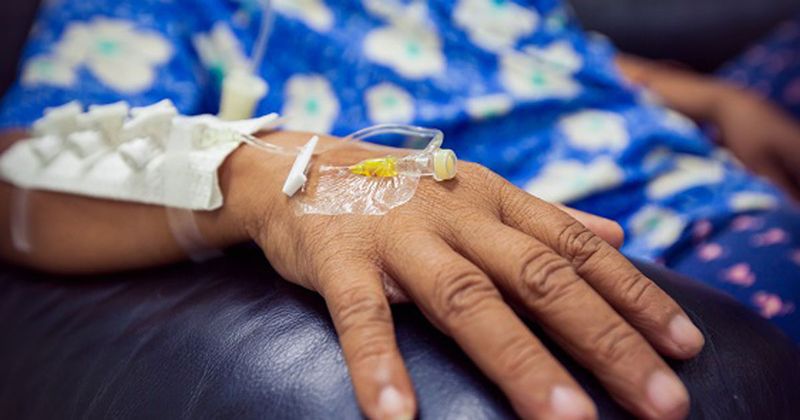Change in cardiac function unaffected by troponin-guided strategy during chemotherapy
Key takeaways:
- Early cardioprotection with carvedilol and candesartan did not add benefit in preserving CV function in high-risk patients undergoing chemotherapy.
- Results were similar among those deemed lower-risk.
A small study showed no impact from troponin-guided carvedilol and candesartan intervention to preserve cardiac function among seemingly high-risk patients undergoing chemotherapy.
The results of the multicenter, prospective, randomized, open-label Cardiac CARE trial were published in Circulation.

Image: Adobe Stock
“Progression from heart muscle injury at the time of chemotherapy to the development of clinical heart failure is poorly understood, and the overall utility of potentially cardioprotective treatments has not been established,” Peter A. Henriksen, MB ChB, PhD, of the British Heart Foundation Centre for Cardiovascular Sciences at Queen’s Medical Research Institute in Edinburgh, U.K., and colleagues wrote. “The objectives of the Cardiac CARE trial ... were to determine whether cardiac troponin monitoring identifies patients at risk of left ventricular systolic dysfunction during anthracycline chemotherapy and whether cardiac troponin-guided treatment with candesartan and carvedilol prevents the development of left ventricular systolic dysfunction.”
To test utility of the troponin monitoring and threshold-guided intervention pathway, Henriksen and colleagues recruited 175 patients (mean age, 53 years; 87% women) with breast cancer (71%) and non-Hodgkin lymphoma (29%) receiving anthracycline chemotherapy.
Participants underwent serial high-sensitivity cardiac troponin testing and cardiac MRI before, during and 6 months after cancer treatment, and those deemed high-risk for cardiotoxicity — defined as cardiac troponin I concentrations thresholds of 5 ng/L or more during cycle two of cancer therapy and 23 ng/L or more during cycles three to six — were randomized to standard care plus a combination carvedilol (Coreg) and candesartan therapy or standard care alone.
The primary outcome was change in left ventricular ejection fraction at 6 months.
Overall, 32.6% were deemed high-risk for cardiotoxicity, and of those patients, 29 were randomly assigned to cardioprotection and 28 to standard care.
After adjustment for age, pretreatment LVEF and anthracycline dose, the mean difference in 6-month LVEF between patients assigned to cardioprotection and those assigned standard care was not significantly different (mean difference, 0.37%; 95% CI, 3.59 to 2.85; P = .82).
Results were similar among patients deemed low risk at lower levels of cardiac troponin I concentration (P = .92), according to the study.
“We found no strong evidence that early cardioprotection therapy with combined candesartan and carvedilol therapy prevented 6-month decline in LVEF in patients with breast cancer or non-Hodgkin lymphoma. This was despite enrichment by randomizing only patients with high cardiac troponin concentrations and clear evidence of pharmacological effect, with changes in heart rate and left ventricular end-diastolic volume in the cardioprotection group,” the researchers wrote. “Moreover, LVEF decline was similar in low-risk nonrandomized and high-risk randomized patient groups despite substantial differences in cardiac troponin concentrations during anthracycline treatment.
“Our findings bring into question the benefit of guidelines that advocate treatment based on cardiac troponin monitoring to identify patients at risk of anthracycline [cancer therapy-related cardiac dysfunction] and early intervention with cardioprotection therapy in patients with the highest levels of cardiac troponin,” they wrote.

